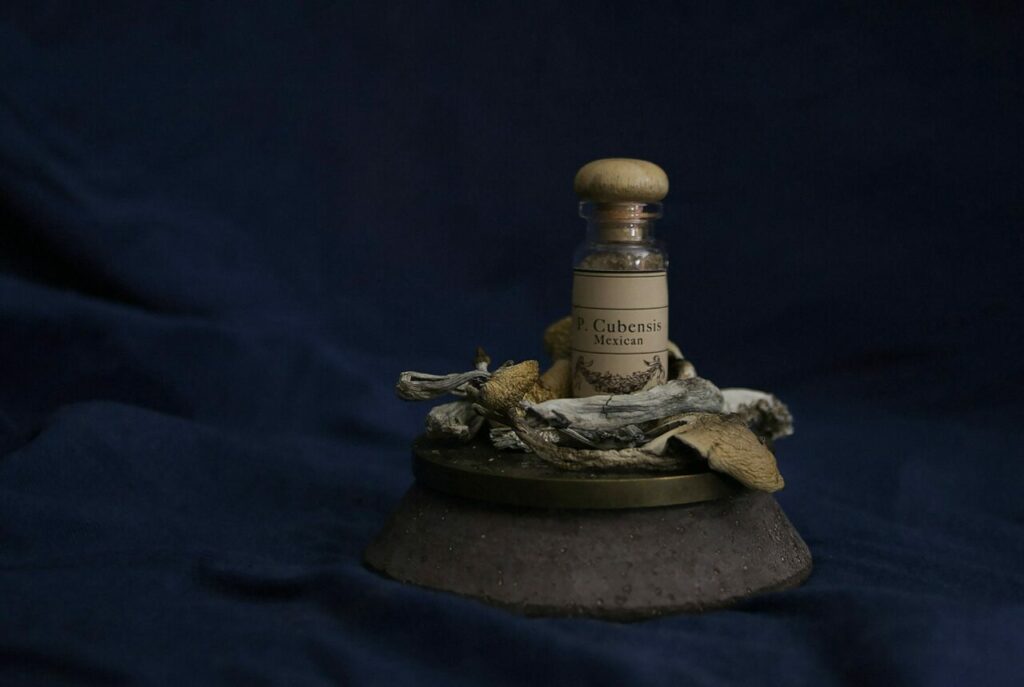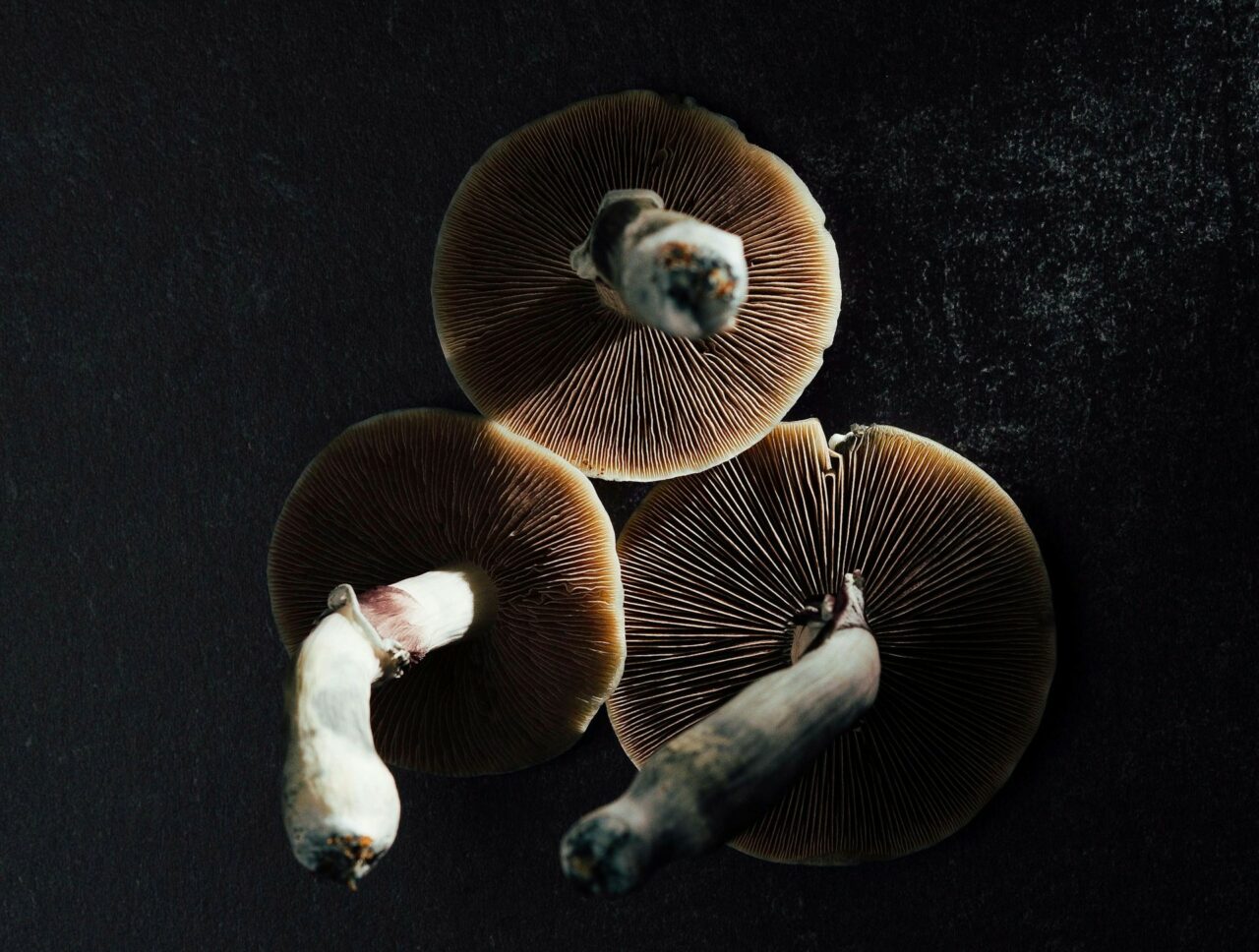The burgeoning interest in natural magic mushrooms in Canada has sparked a concurrent rise in the popularity of laboratory-synthesized psilocybin products. These lab-engineered products are often favored by researchers due to their consistent dosage. However, it’s important to note that naturally occurring mushrooms can sometimes offer greater potency than their lab-made counterparts. Significant differences, including varying potency levels, have been pointed out by experts.

Key Takeaways:
- More than 180 species of natural mushrooms deliver varying potency levels, with the effects dependent on factors such as species, consumption method, cultivation, and individual tolerance.
- Laboratory-manufactured psilocybin, a synthetic form of the organic compound, is created in controlled environments to guarantee consistent potency and purity for clinical research, with a focus on mental health treatments.
- Multiple compounds in psychedelic mushrooms, including psilocin and baeocystin, can interact to produce a more profound and intense experience compared to a single compound alone.
Emerging Market: Diverse Forms of Psychedelics
Psilocybin mushrooms are gaining significant attention in Canada, especially as potential treatments for mental health disorders such as OCD, depression, PTSD, and anxiety. This surge in interest has prompted provincial governments to contemplate decriminalizing their recreational usage.
In 2020, Canada enacted laws allowing limited medical use of these mushrooms under certain circumstances. As recently as last year, the federal government granted permission for specific terminally ill patients to use these substances as part of their symptom management regimen.
These forward-thinking policies have paved the way for the rise of synthetic psychedelics.
The Ongoing Debate
The enduring discussion contrasting organic and lab-made psychedelics revolves around aspects of safety, accessibility, and cost.
Some argue that natural psychedelics provide a more comprehensive and traditional experience. On the flip side, advocates of laboratory-made variants underscore their standardization potential for medical applications, along with guaranteed dosage control and quality assurance.
Despite the potential for lab-produced psychoactive substances to widen accessibility, apprehensions over possible drug monopolization remain. Critics warn that this could result in less improved accessibility but also increased costs for users.
A Comprehensive Guide to Psilocybin
Known for their mind-altering effects, magic mushrooms – particularly the Psilocybe cubensis variety – are a type of naturally occurring psychedelic substance available today. This family of mushrooms includes various strains such as Golden Teachers, Amazonian Cubensis, and Blue Meanies, among others, with Psilocybe cubensis being the most renowned.
Deciphering the Psychedelic Experience
The psychedelic compound psilocin, derived from these mushrooms, morphs into another chemical when metabolized by the liver. This new compound engages with the brain’s serotonin receptors, more specifically, the 5-HT2A receptor.
The 5-HT2A receptor is vital for mood regulation, cognitive functioning, and perception. Its interaction with the newly formed compound alters the standard operation of serotonin pathways, leading to changes in visual and auditory perception, thought processes, and emotional states. This transformation results in an uplifted mood, heightened creativity, introspection, and what is typically termed as “psychedelic” experiences.
The Two Main Types
| Natural | Over 180 species of fungi contain these compounds. The potency varies depending on the mushroom species, with Psilocybe cubensis being a prevalent variety. Effects can also vary based on consumption methods, cultivation techniques, and individual tolerance. |
| Synthetic | These compounds, chemically identical to their natural counterparts, are produced in labs under controlled conditions to ensure consistency and purity. Synthetic versions are increasingly being explored for clinical use, particularly in mental health treatments. |
Comparing Nature’s Offering and Synthetic Production: Key Differences
Found in certain species of magic mushrooms, natural versions of these drugs have been used by indigenous communities in North and South America in their sacred rituals and ceremonies.
- Derived from plants and mushrooms
- Utilized in age-old rituals and healing practices
- The potency of each strain is dictated by its unique genetic composition
On the other hand, synthetic versions of these drugs are created in labs.
Drugs that closely mimic the natural chemical structure of specific compounds are meticulously created by professionals in controlled environments. Despite their similarity to natural drugs, these synthetics can alter the overall psychedelic experience to varying degrees.
- Produced by expert pharmaceutical specialists
- Recent advancements tailored for medicinal uses
- Precise potency resulting from a regulated production process
Due to their bioactive compounds, organic substances present additional benefits. Various types of mushrooms contain different levels of psilocybin and other compounds, resulting in a range of effects.
Research Findings
A study carried out at the Hebrew University showed psychedelic mushrooms have a more potent and enduring effect on synaptic plasticity than their synthetic counterparts. The researchers studied the drug’s influence on mice’s brain activity by tracking behavioural changes and specific brain chemicals.
The study discovered that the extract reduced head twitches and promoted the growth of new brain connections, suggesting that mushroom extract may offer additional benefits compared to a single compound.
The research team introduced the “entourage effect” concept, defined as the combined impact of multiple compounds in psychedelic mushrooms potentially exceeding the effects of individual compounds. Regarding mushrooms, psilocin, baeocystin and other tryptamines may synergistically create a profound experience.
These supplementary chemicals, absent in laboratory-produced substances, could result in subtle differences in effects, even if the psychedelic content is the same.
Expert Opinions on Nature’s Superiority
Consistently, research suggests that psilocybin—regardless of its form—exhibits promising results for treating various psychiatric disorders. A 2024 study examining the effects of controlled substances on patients with treatment-resistant depression found symptoms decreased following magic mushroom administration.
When combined with other treatments, organic psychedelics might foster deeper emotional processing and insights during therapy, thereby enhancing long-term results.
Researchers from the same university found that hallucinogenic mushrooms boost synaptic plasticity. These mushrooms possess a distinct metabolic profile that affects oxidative stress and energy production pathways, unlike synthetic psychedelics.
Market Ramifications
The growing body of research on this subject could shape Canadians’ perceptions of and buying patterns for psychedelics. Preliminary measures by Health Canada, such as the Special Access Program, are showing encouraging signs of laying the groundwork for legalization and revolutionizing the therapeutic landscape. Psilocybin-assisted therapy could become a dominant treatment method in the near future.
Organic options are projected to gain in importance in clinical trials and therapeutic settings. As the country progresses towards fully unlocking the potential of organic psychedelics, significant progress in mental health treatments appears on the horizon.
Guidelines for Safely Procuring Shrooms in Canada
- Via Section 56 Exemption: Health Canada recognizes that patients with severe medical conditions may use psilocybin as an alternative therapy. This exemption is part of the Controlled Drugs and Substances Act.
- Clinical Trials: Early-stage clinical trials are sanctioned to study the drug’s potential in treating mental health disorders. Participants must meet specific requirements and undergo medical screening.
- Online Market: Psilocybin capsules or edibles can be purchased from Canadian online vendors, but it’s crucial to buy from reliable sources.
Experience the Power of Natural Compounds
Nature is full of wonders, including shrooms. Rather than turning to synthetic psychedelics, consider the naturally potent magic mushrooms from Canada. They provide powerful therapeutic benefits. Discover the best, naturally derived shroom strains at Schedule35 Canada.
The shrooms we have available for purchase not only meet but exceed the standard by maintaining their purest and most genuine composition in a dried form. Place your order today for discreet and convenient delivery to your doorstep.
Frequently Asked Questions
What are baeocystin and norbaeocystin?
Both are tryptamine or indole alkaloids. They bear a chemical resemblance to psilocybin. These tryptamine derivatives serve as secondary alkaloids in shrooms, enhancing the overall psychedelic experience, albeit to a lesser extent. Baeocystin and Norbaeocystin share a similar chemical structure but differ in their psychoactive properties.
Do organic dried mushrooms constitute the components of capsules and edibles?
The experience can vary depending on the source. Online Dispensaries offer products packed with organic elements, facilitating the full entourage effect. Capsules, on the other hand, typically contain synthetic compounds and are widely used in clinical trials and clinics.
Do natural psychedelics offer more intense experiences?
It’s crucial to understand that expecting an intense experience from a natural psychedelic could indeed lead to such an outcome. After all, our expectations, a part of the ‘set’, can guide the journey. Natural psychedelics, often linked with ceremonial traditions, can induce uniquely fulfilling experiences within this ritualistic context. These experiences are markedly different from sessions involving synthetic compounds in clinics.





